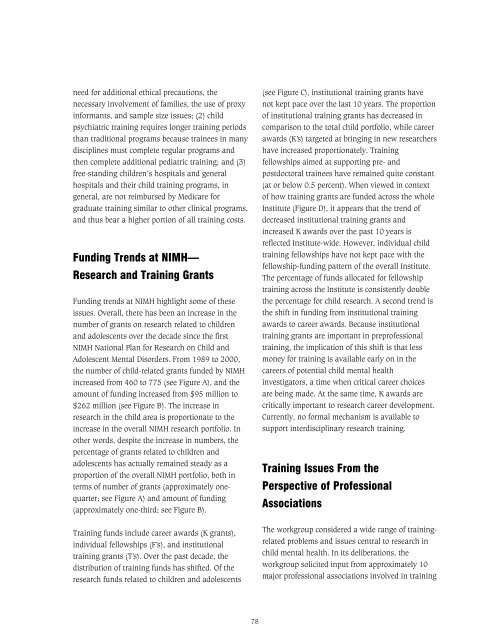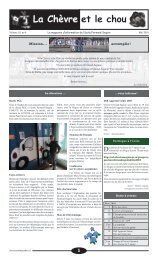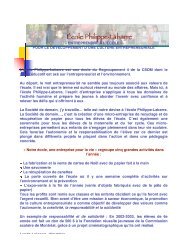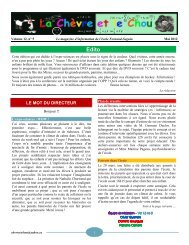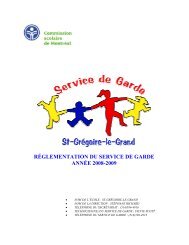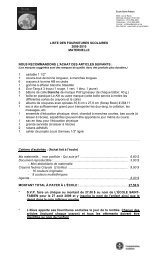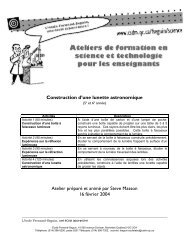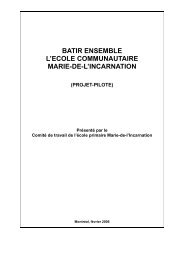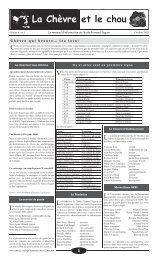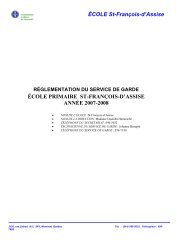Research on Child and Adolescent Mental Health
Research on Child and Adolescent Mental Health
Research on Child and Adolescent Mental Health
You also want an ePaper? Increase the reach of your titles
YUMPU automatically turns print PDFs into web optimized ePapers that Google loves.
need for additi<strong>on</strong>al ethical precauti<strong>on</strong>s, the<br />
necessary involvement of families, the use of proxy<br />
informants, <strong>and</strong> sample size issues; (2) child<br />
psychiatric training requires l<strong>on</strong>ger training periods<br />
than traditi<strong>on</strong>al programs because trainees in many<br />
disciplines must complete regular programs <strong>and</strong><br />
then complete additi<strong>on</strong>al pediatric training; <strong>and</strong> (3)<br />
free-st<strong>and</strong>ing children’s hospitals <strong>and</strong> general<br />
hospitals <strong>and</strong> their child training programs, in<br />
general, are not reimbursed by Medicare for<br />
graduate training similar to other clinical programs,<br />
<strong>and</strong> thus bear a higher porti<strong>on</strong> of all training costs.<br />
Funding Trends at NIMH—<br />
<str<strong>on</strong>g>Research</str<strong>on</strong>g> <strong>and</strong> Training Grants<br />
Funding trends at NIMH highlight some of these<br />
issues. Overall, there has been an increase in the<br />
number of grants <strong>on</strong> research related to children<br />
<strong>and</strong> adolescents over the decade since the first<br />
NIMH Nati<strong>on</strong>al Plan for <str<strong>on</strong>g>Research</str<strong>on</strong>g> <strong>on</strong> <strong>Child</strong> <strong>and</strong><br />
<strong>Adolescent</strong> <strong>Mental</strong> Disorders. From 1989 to 2000,<br />
the number of child-related grants funded by NIMH<br />
increased from 460 to 775 (see Figure A), <strong>and</strong> the<br />
amount of funding increased from $95 milli<strong>on</strong> to<br />
$262 milli<strong>on</strong> (see Figure B). The increase in<br />
research in the child area is proporti<strong>on</strong>ate to the<br />
increase in the overall NIMH research portfolio. In<br />
other words, despite the increase in numbers, the<br />
percentage of grants related to children <strong>and</strong><br />
adolescents has actually remained steady as a<br />
proporti<strong>on</strong> of the overall NIMH portfolio, both in<br />
terms of number of grants (approximately <strong>on</strong>equarter;<br />
see Figure A) <strong>and</strong> amount of funding<br />
(approximately <strong>on</strong>e-third; see Figure B).<br />
Training funds include career awards (K grants),<br />
individual fellowships (F’s), <strong>and</strong> instituti<strong>on</strong>al<br />
training grants (T’s). Over the past decade, the<br />
distributi<strong>on</strong> of training funds has shifted. Of the<br />
research funds related to children <strong>and</strong> adolescents<br />
(see Figure C), instituti<strong>on</strong>al training grants have<br />
not kept pace over the last 10 years. The proporti<strong>on</strong><br />
of instituti<strong>on</strong>al training grants has decreased in<br />
comparis<strong>on</strong> to the total child portfolio, while career<br />
awards (K’s) targeted at bringing in new researchers<br />
have increased proporti<strong>on</strong>ately. Training<br />
fellowships aimed at supporting pre- <strong>and</strong><br />
postdoctoral trainees have remained quite c<strong>on</strong>stant<br />
(at or below 0.5 percent). When viewed in c<strong>on</strong>text<br />
of how training grants are funded across the whole<br />
Institute (Figure D), it appears that the trend of<br />
decreased instituti<strong>on</strong>al training grants <strong>and</strong><br />
increased K awards over the past 10 years is<br />
reflected Institute-wide. However, individual child<br />
training fellowships have not kept pace with the<br />
fellowship-funding pattern of the overall Institute.<br />
The percentage of funds allocated for fellowship<br />
training across the Institute is c<strong>on</strong>sistently double<br />
the percentage for child research. A sec<strong>on</strong>d trend is<br />
the shift in funding from instituti<strong>on</strong>al training<br />
awards to career awards. Because instituti<strong>on</strong>al<br />
training grants are important in preprofessi<strong>on</strong>al<br />
training, the implicati<strong>on</strong> of this shift is that less<br />
m<strong>on</strong>ey for training is available early <strong>on</strong> in the<br />
careers of potential child mental health<br />
investigators, a time when critical career choices<br />
are being made. At the same time, K awards are<br />
critically important to research career development.<br />
Currently, no formal mechanism is available to<br />
support interdisciplinary research training.<br />
Training Issues From the<br />
Perspective of Professi<strong>on</strong>al<br />
Associati<strong>on</strong>s<br />
The workgroup c<strong>on</strong>sidered a wide range of trainingrelated<br />
problems <strong>and</strong> issues central to research in<br />
child mental health. In its deliberati<strong>on</strong>s, the<br />
workgroup solicited input from approximately 10<br />
major professi<strong>on</strong>al associati<strong>on</strong>s involved in training<br />
78


